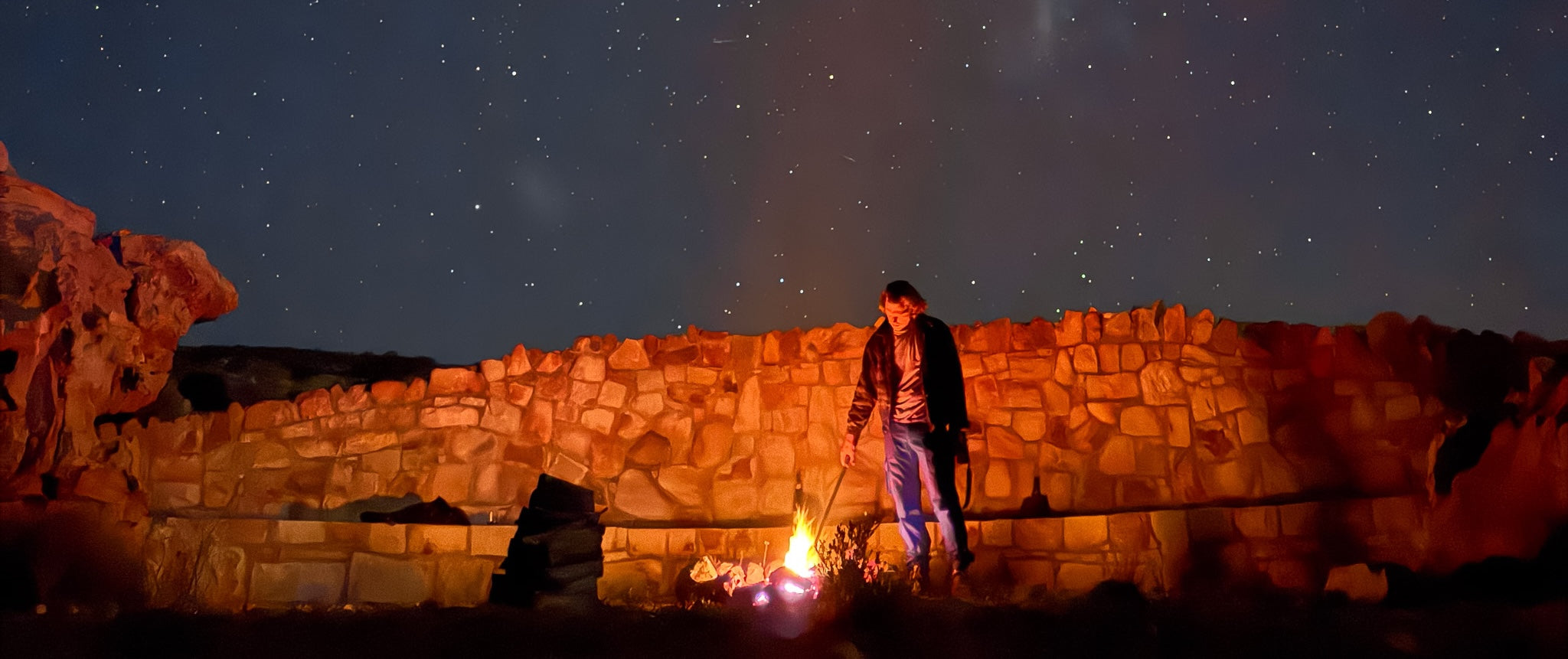Before gas stoves and firelighters, there was one thing - fire.
But when exactly did humans first harness the flame? Was it a lightning bolt? A lucky spark? Or a particularly frustrated caveman rubbing sticks like his dinner depended on it?
Grab your chops and settle in. This is the proudly South African story of fire and why it still brings us together today.
Let There Be Fire (2 Million Years Ago)
It all started long, long before your buddy tried to light a braai with petrol.
Somewhere in East Africa, a bolt of lightning struck a dry tree and lit up the savannah. Early humans (not even Homo sapiens yet) likely stared in awe as flames danced and meat possibilities sizzled in the air.
It was the first time fire was more than fear. It was fascinating. A powerful, glowing force they couldn’t control yet, but knew they needed. Warmth. Light. Protection. And soon, the first taste of cooked meat.
The fire-human bromance had officially begun.

Wonderwerk Cave: South Africa’s Original Braai Spot (1 Million Years Ago)
Fast forward to about a million years ago in the Northern Cape of South Africa. Inside the now-famous Wonderwerk Cave, scientists found some very familiar signs: burnt bones, ash, and evidence of sustained fire use.
Translation? Our ancestors weren’t just surviving, they were braaiing.
The cave might not have had a braai place or grid, but it had the essentials: fire, meat, and a circle of people talking nonsense while someone took charge of the flames.
If you listen closely, you can almost hear the first-ever “pass me the tongs.”
The San: Keepers of Flame (20,000 Years Ago)
Long before anyone uttered the words “You should try gas” (please don’t), the San people were already fire masters. Using only sticks, stones, and sheer determination, they made fire central to their lives.
But it wasn’t just for cooking. Fire was spiritual, social, and sacred.
Around the flames, stories were passed down, meals were shared, and dangerous predators were kept at bay. The San didn’t just light fires, but kept them alive, often carrying embers from place to place, ensuring the flame never died.
From Kak Praat to Braai Culture (500 Years Ago)
As settlers met Indigenous communities, ideas were exchanged, meat was introduced to the flame in new ways, and braai culture as we know it began to take shape.
With fire now easier to make (hello, matches) and tools evolving (eventually leading to the Donkey Long Tong), the fire moved from necessity to celebration.
It was no longer just about staying alive but about living well. About standing around a fire for hours, drink in hand, swapping stories, and burning boerewors just slightly on purpose.
The flame became a gathering point, and “kak praat” became an art form.

Keeping the Flames Alive (Today)
From ancient sparks in Wonderwerk Cave to late-night braais in the suburbs, fire has always been part of our DNA. It’s primal. It’s powerful. It’s personal.
At Donkey Long Tong, we honour that history with tools that are fire-ready, long-lasting, proudly local, and built for anyone who believes chicken is a salad and meat belongs on open flame.
We don’t just sell fire tools. We help you carry the flame forward. Just like the San, just like your Oupa, and just like every flame-loving fire starter before you.

Why Fire Still Matters
Fire isn't just a survival tool. It's a symbol of connection, tradition, and the human spirit. It turns a meal into a moment, a group of people into a community, and an ordinary night into a story worth telling.
So next time you light the fire, remember:
You’re not just making dinner.
You’re continuing a legacy that started millions of years ago.





